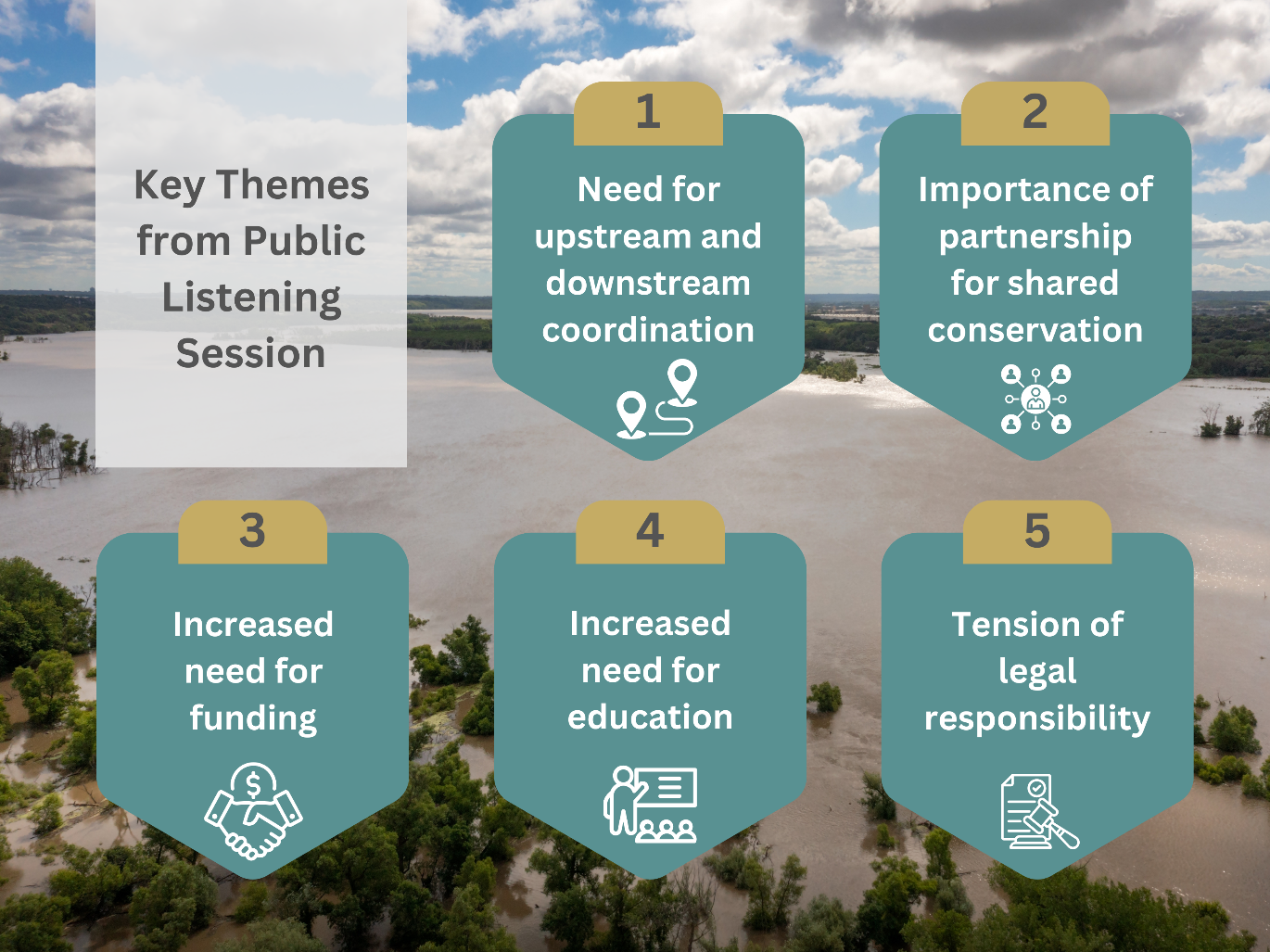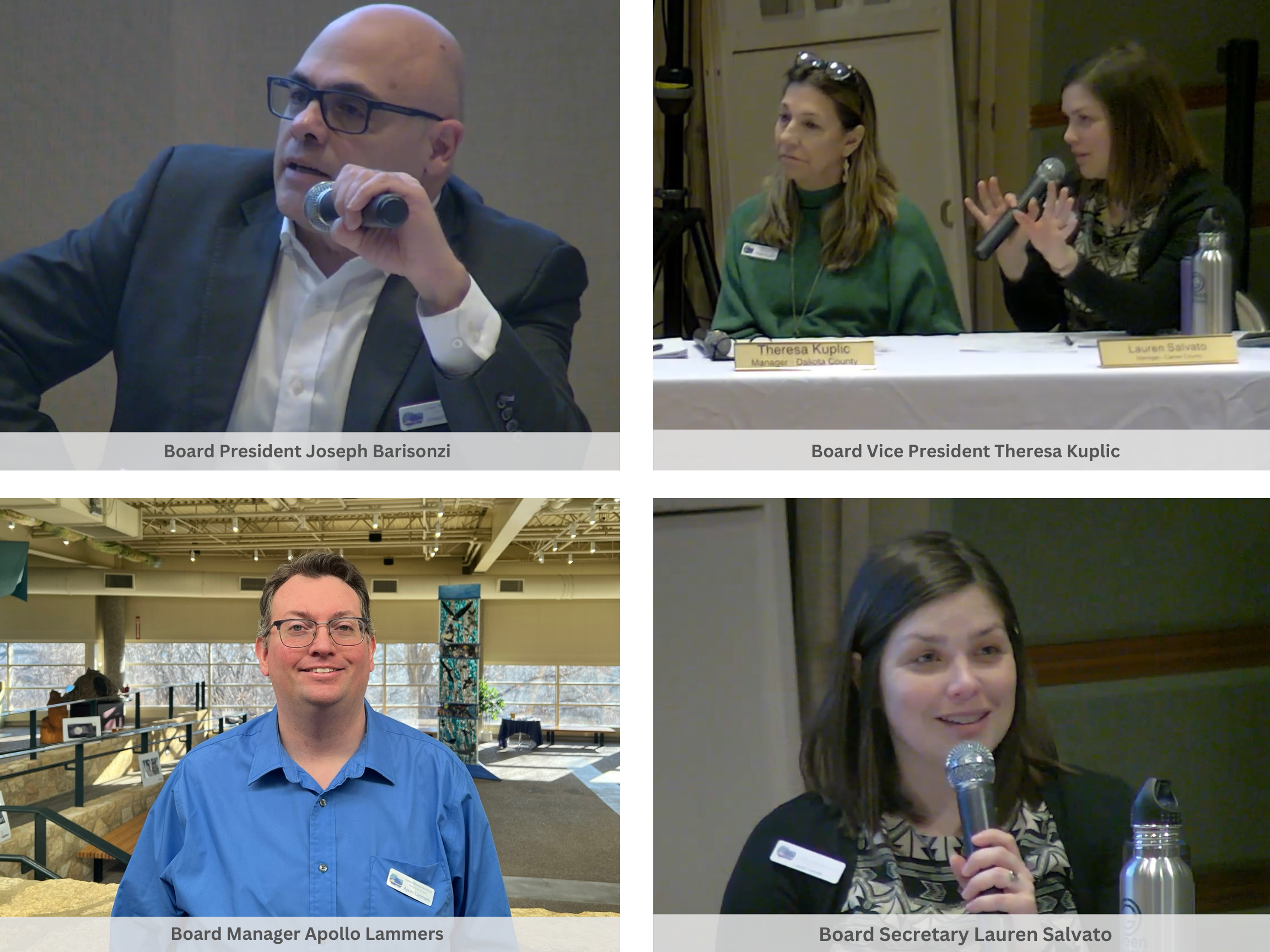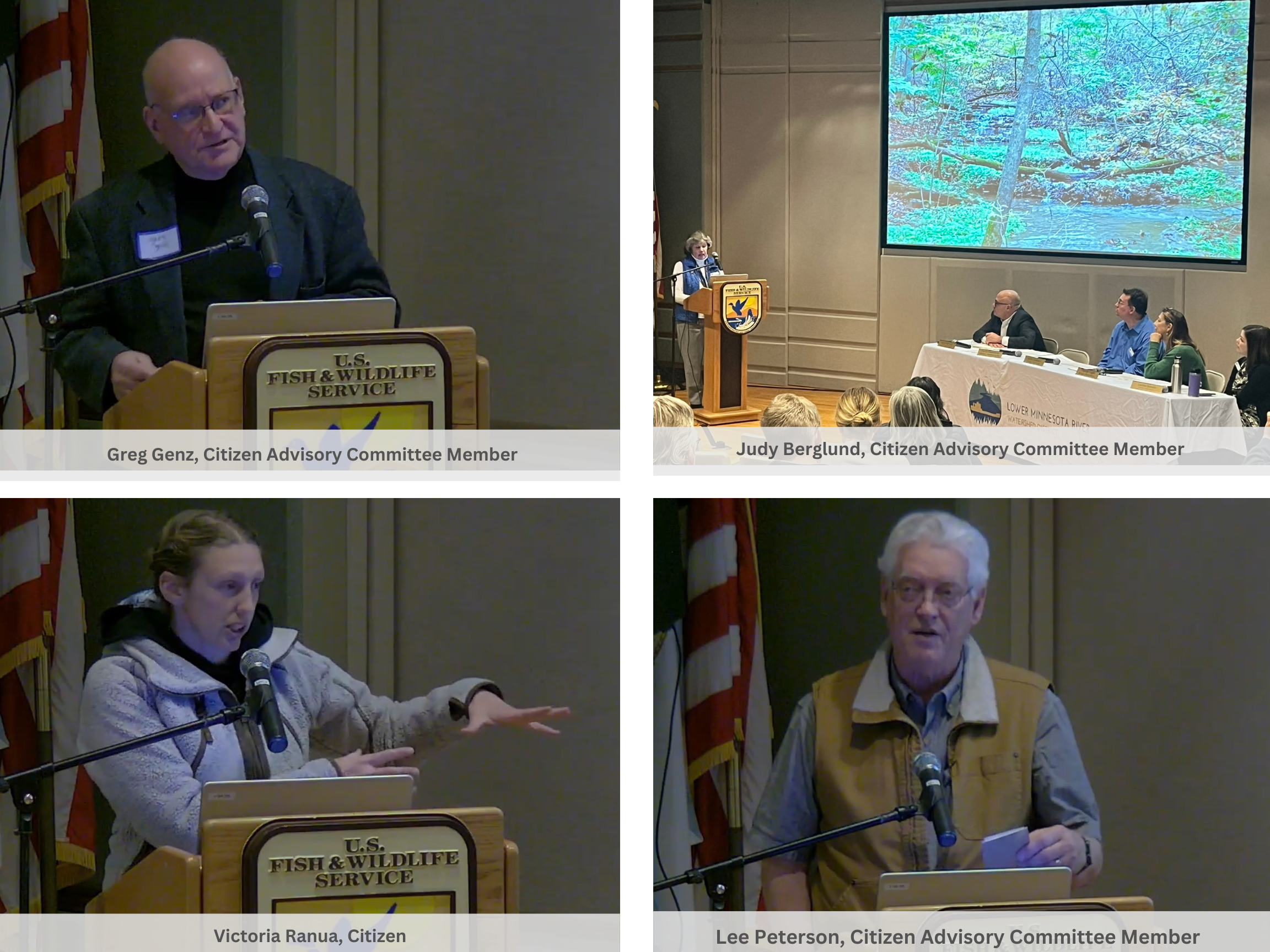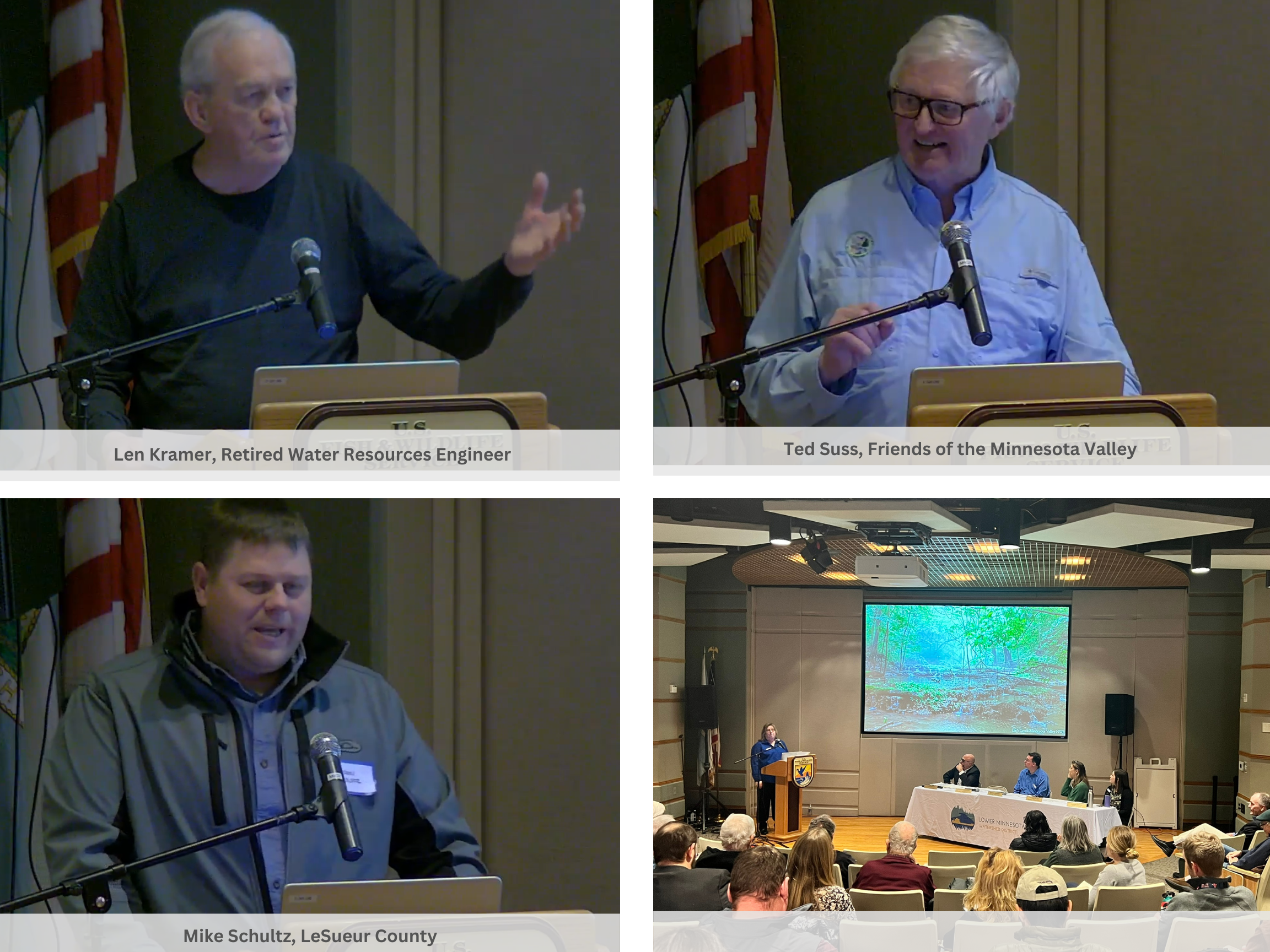Event Summary
Following the critical flooding in 2024 in the Minnesota River Valley, the LMRWD Board of Managers proposed a public listening session to convene partners to build a shared legislative agenda, inform the next Watershed Management Plan Update, and highlight key projects and programs to prioritize. In fall 2024, the LMRWD released an invitation to submit testimony, putting out a broad call for science-based information to be used to build a collective vision. The LMRWD received written testimony from partners, several of whom presented at the January 8, 2025, event. During the public event, several participants shared comments, including members of the LMRWD Citizen Advisory Committee and partner organizations. The following summarizes highlights from the Public Listening Session with the intent of informing the Board’s next steps.
Available Reports
The following results are available as a result of the Public Listening Session:
Testimony Received

Issue: Flood Impacts, Mitigation, Water Storage, and Costs of Solutions
Although there is a historic context for flooding on the Minnesota River, the issue has become more significant and destructive based on changing climate and altered hydrology. Flooding creates impacts to the river’s navigability, adjacent property, and natural resources; and increases erosion and sedimentation in the river.
Testimony:
- Holly Bushman, Lower Minnesota River East Watershed Partnership
- Norm Senjem, Lake Pepin Legacy Alliance
- Scott Sparlin, Minnesota River Congress
- Tom Worthington, Minnesota Valley National Wildlife Refuge
Issue: Upstream Water Management
Upstream drainage practices and projects can have a significant impact on downstream communities. Water storage on the landscape, initiated through cooperation with upstream partners, can have a positive effect downstream by slowing the flow and frequency of water and effectively controlling flooding.
Testimony:
- Kirby Templin, City of Shakopee
- Scott Sparlin, Minnesota River Congress
- Norm Senjem, Lake Pepin Legacy Alliance
- Steve Knutson, Citizen
Issue: Financial Costs of Flooding and Benefits of Proposed Solutions
With any large-scale environmental concern, the price and scope of the solutions needed to address the challenges are costly and broad. Both flood control and flood damages are costly, but proactive solutions are needed and also offer multiple benefits.
Testimony:
- Holly Bushman, Lower Minnesota River East Watershed Partnership
- Scott Sparlin, Minnesota River Congress
- Tom Worthington, Minnesota Valley National Wildlife Refuge
Key Findings
Issue: Public Engagement and Education
Because of the basinwide scale of the LMRWD’s challenges and work, there is a great need for education, outreach, partnership, coordination, and awareness. Many stakeholders requested an increase in the advocacy and legal responsibility of the LMRWD. Engaging stakeholders at various levels is complex but extremely important to success. Building momentum around shared resources and responsibility is increasingly necessary to combat large flooding concerns.
Testimony:
Issue: Sediment Control, Erosion, and Water Quality
Erosion threatens water quality within the Minnesota River through increased sediment load. Removing sediment from the river is already a primary role of the LMRWD; however, the increased severity of flooding is compounding an already challenging issue, not only for the LMRWD but also for downstream communities and Lake Pepin.
Testimony:


Event Speakers





